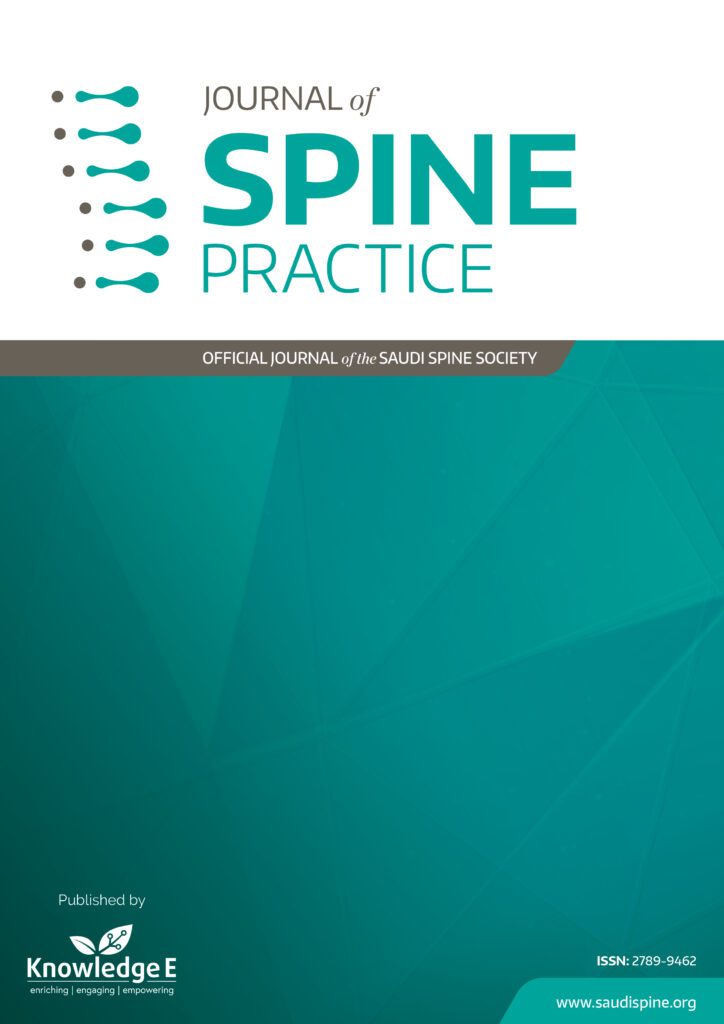
Journal of Spine Practice
ISSN: 2789-9462
Leading research in all spine subspecialties focusing on orthopaedic spine, neurosurgery, radiology, and pain management.
Upper Thoracic Spine Fractures Outcomes and Complications in King Abdul-Aziz Medical City, Riyadh
Published date: Nov 07 2021
Journal Title: Journal of Spine Practice
Issue title: Journal of Spine Practice (JSP): Volume 1, Issue 1
Pages: 16
Authors:
Abstract:
Introduction: Upper thoracic spine fractures (T1-T6) are not uncommon. They are often high-energy injuries complicated by multiple life-threatening comorbidities. There is a controversial discussion in the literature regarding the treatment choices. Thoracic pedicle screw fixation has replaced all other fixation techniques for its success rate and safety. Despite the number of studies discussing upper thoracic spine fractures, data on literature reporting postoperative complications are deficient. The aim of the study was to assess, in a series of patients, the impact of traumatic upper thoracic fractures on sagittal alignment, the incidence of possible complications, and the effect of associated injuries.
Methodology: This retrospective chart review study included all adult cases diagnosed as traumatic upper thoracic spine fractures in KAMC in Riyadh. Data were obtained from the computerized database. The information reviewed included fracture characteristics, associated injuries, pre- and postoperative neurological status and sagittal alignment, follow-up duration, and the presence of complications.
Result: A total of 19 patients were included in the study. Of them, 17 (89.5%) were injured secondary to a motor vehicle accident. There were three patients with a fixation level crossing the CT junction, more blood loss and procedure time was noticed with these cases. There was a notable improvement in upper thoracic kyphosis by 9º when measuring pre- and postop fracture Cobb's angle. The mean preop angle was 28.98 and the mean postop was 20.76. Of all the 19 cases involved in the study, 3 patients had developed surgical site infection as a complication. No other complication was reviewed.
Conclusion: It is well-known in the literature that the correction of kyphosis and the absence of residual deformity postoperatively are indicators of the success and safety of the procedure used. Our findings correspond to the literature discussion that the current practice in managing traumatic upper thoracic spine fracture in KAMC in Riyadh is relatively safe and effective. Yet, further studies are needed to elaborate more on the relationship between the presence of other injuries and patients’ factors and postoperative outcomes.
References: